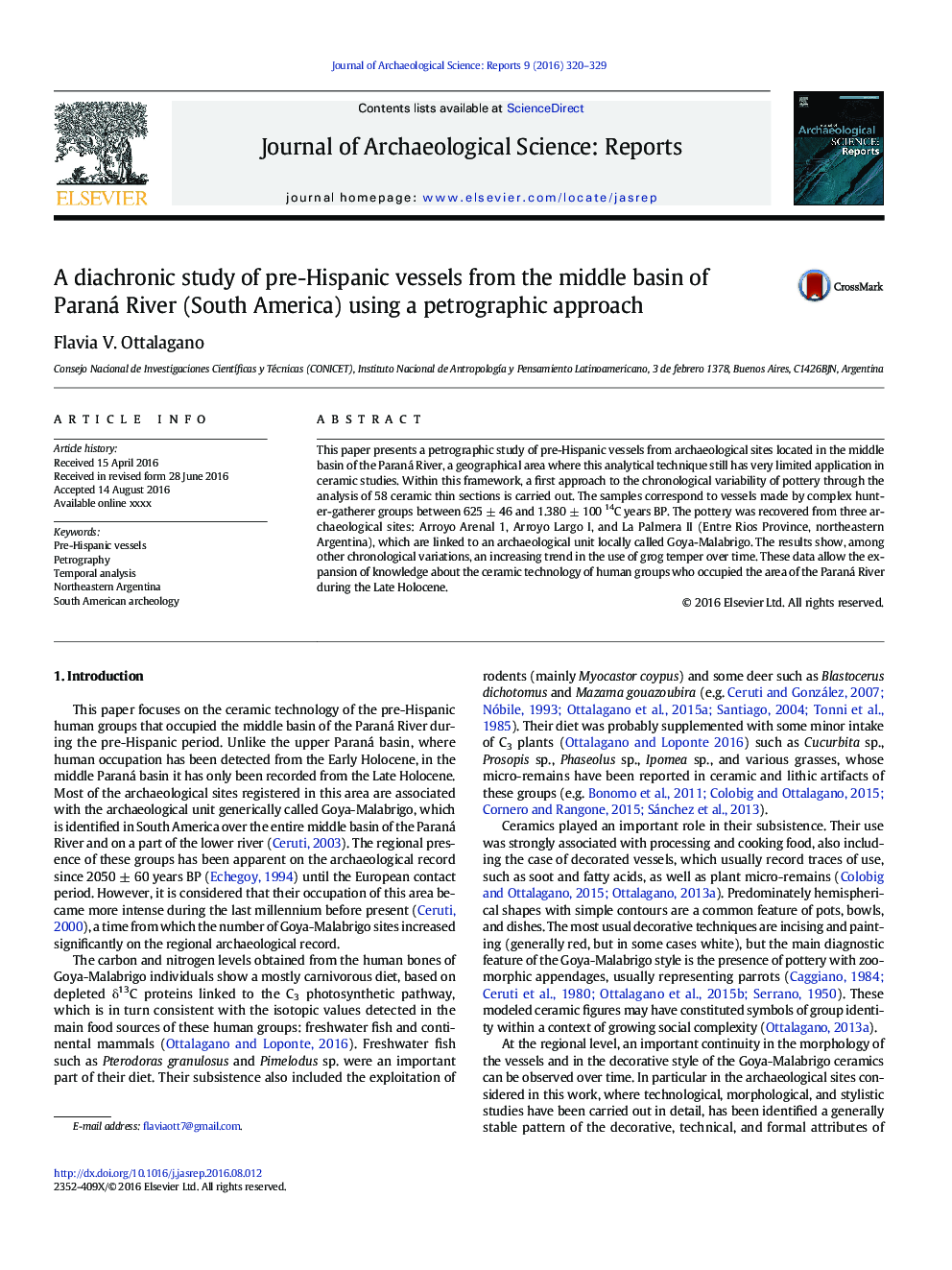| Article ID | Journal | Published Year | Pages | File Type |
|---|---|---|---|---|
| 7445435 | Journal of Archaeological Science: Reports | 2016 | 10 Pages |
Abstract
This paper presents a petrographic study of pre-Hispanic vessels from archaeological sites located in the middle basin of the Paraná River, a geographical area where this analytical technique still has very limited application in ceramic studies. Within this framework, a first approach to the chronological variability of pottery through the analysis of 58 ceramic thin sections is carried out. The samples correspond to vessels made by complex hunter-gatherer groups between 625 ± 46 and 1.380 ± 100 14C years BP. The pottery was recovered from three archaeological sites: Arroyo Arenal 1, Arroyo Largo I, and La Palmera II (Entre Rios Province, northeastern Argentina), which are linked to an archaeological unit locally called Goya-Malabrigo. The results show, among other chronological variations, an increasing trend in the use of grog temper over time. These data allow the expansion of knowledge about the ceramic technology of human groups who occupied the area of the Paraná River during the Late Holocene.
Keywords
Related Topics
Social Sciences and Humanities
Arts and Humanities
History
Authors
Flavia V. Ottalagano,
